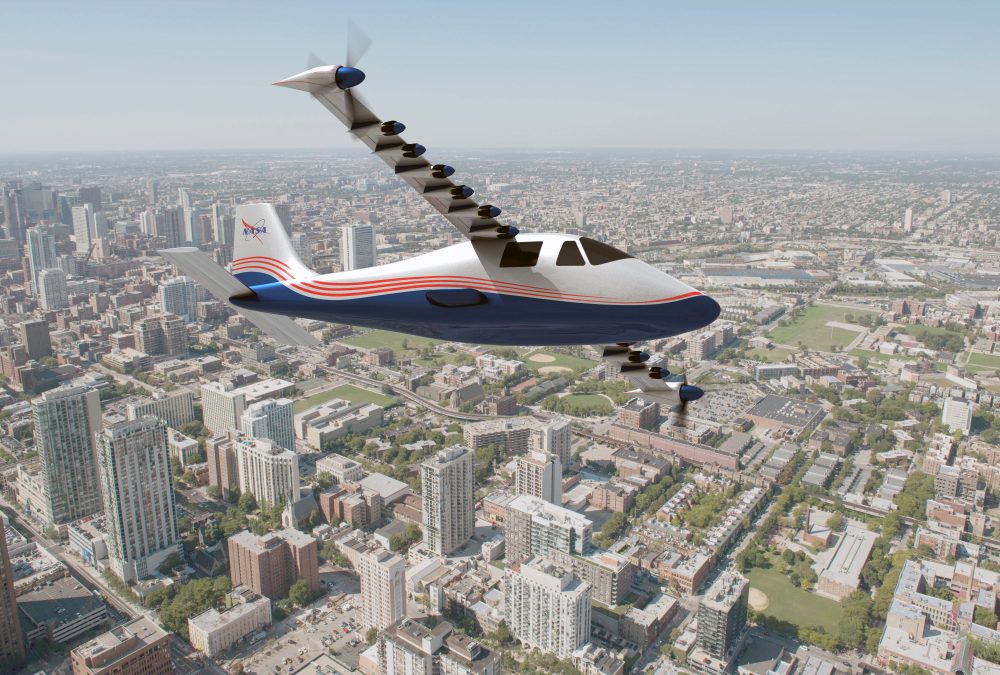
NASA is developing an all-electric experimental plane called the X-57 Maxwell as part of an effort to share insight with regulators before EV planes establish a market. Propellers for the electric X-plane recently completed wind tunnel testing at the Langley Research Center in Virginia.
Wind tunnel test
Positioned along the leading edge of X-57’s cruise-efficient wing, these motors and propellers will be utilized first during takeoff, providing lift augmentation to the X-Plane at low aircraft speeds. Once X-57 goes into cruise mode, these motors will deactivate, and the propeller blades will fold inward to prevent creating additional drag while two larger electric cruise motors remain active on the wing tips. Then, when it’s time to land, the smaller high-lift motors will reactivate, unfolding the propeller blades to create the appropriate lift for landing at approach speed.
NASA says the wind tunnel tests at Langley occurred over a two-week period with wind speeds of more than 90 knots. In total, the X-57 propellers experienced 14 hours of power during wind tunnel testing.
X-57 engineers hope to achieve “the goal of a 500% increase in high-speed cruise efficiency, zero in-flight carbon emissions, and flight that is quieter for communities on the ground,” NASA states.
The electric X-plane will rely on 12 electric high-lift motors and propellers when the design is complete. X-57 will also feature two large wingtip cruise motors as seen in concept art.
Battery powered
X-57 is expected to weigh 3,000 pounds and cruise at 172 mph at 8,000 feet. The all-electric experimental plane will rely on 860 pounds of lithium ion batters rated 69.1 kilowatt hours with 47 usable kilowatt hours.
In order to implement these systems as safely as possible, NASA first had to validate that the batteries could safely power an entire flight profile, and demonstrate the system’s ability to isolate any rapid temperature increase to prevent it from spreading, and escalating into a fire – an event known as a ‘thermal runaway.’
NASA engineers achieved this milestone following a system rede- sign in 2017, allowing the batteries to be fabricated, and ensuring a safe environment for the test program. The successful battery with the integrated high lift motor system will allow the X-57 to take off and land at the same speed as the baseline P2006T. The aircraft will also be less sensitive to gusts and turbulence, leading to a smoother flight.
NASA’s X-plane division has a long history of testing technologies with experiment aircraft, and X-57 will mark the first crewed X-plane for NASA in 20 years.

More
Author: Zac Hall
Source: Electrek



